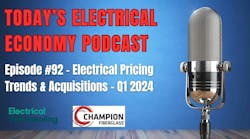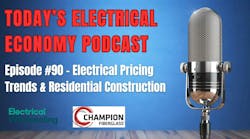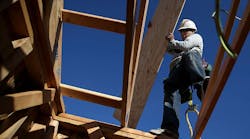Building permits sag in April. Privately-owned housing units authorized by building permits in April were at a seasonally adjusted annual rate of 1,229,000, -2.5% below the revised March rate of 1,260,000, but +5.7% above the April 2016 rate of 1,163,000, according to the most recent housing data from the U.S. Census Bureau. Single-family authorizations in April were at a rate of 789,000, 4.5% below the revised March figure of 826,000. Authorizations of units in buildings with five units or more were at a rate of 403,000.
AIA’s Billing Index slides in April but still on growth territory. After beginning the year with a marginal decline, the Architecture Billings Index published monthly by the American Institute of Architects (AIA), Washington, D.C., has posted three consecutive months of growth in design revenue at architecture firms. As a leading economic indicator of construction activity, the ABI reflects the approximate nine- to twelve-month lead time between architecture billings and construction spending. AIA reported the April ABI score was 50.9, down from a score of 54.3 in the previous month. This score still reflects an increase in design services (any score above 50 indicates an increase in billings).
“Probably even better news for the construction outlook is that new project work coming into architecture firms has seen exceptionally strong growth so far this year,” said AIA Chief Economist Kermit Baker. “In fact, new project activity has pushed up project backlogs at architecture firm to their highest level since the design market began its recovery earlier this decade.”
Leading Economic Index remains strong in April. The Conference Board Leading Economic Index (LEI) for the U.S. increased 0.3% percent in April to 126.9 (2010 = 100), following a 0.3% increase in March, and a 0.5% increase in February. “The recent trend in the U.S. LEI, led by the positive outlook of consumers and financial markets, continues to point to a growing economy, perhaps even a cyclical pickup,” said Ataman Ozyildirim, director of business cycles and growth research at The Conference Board. “First quarter’s weak GDP growth is likely a temporary hiccup as the economy returns to its long-term trend of about 2%.”









